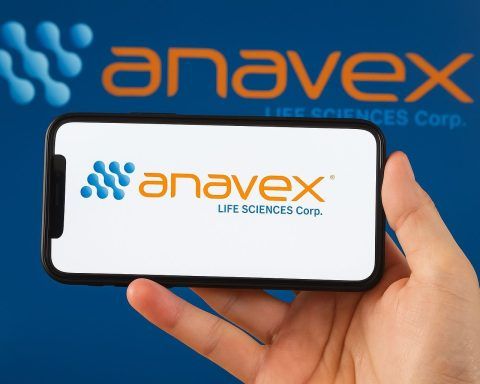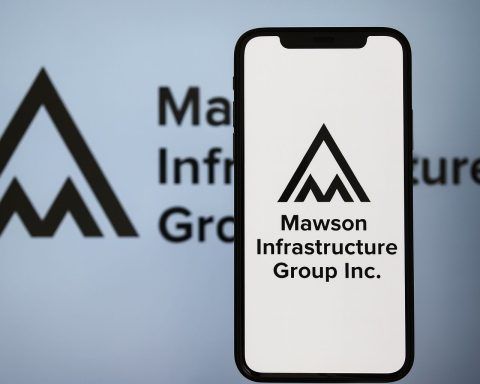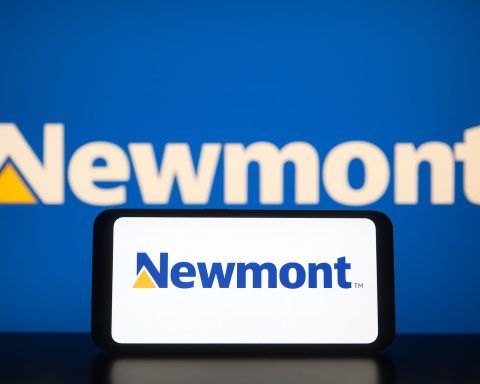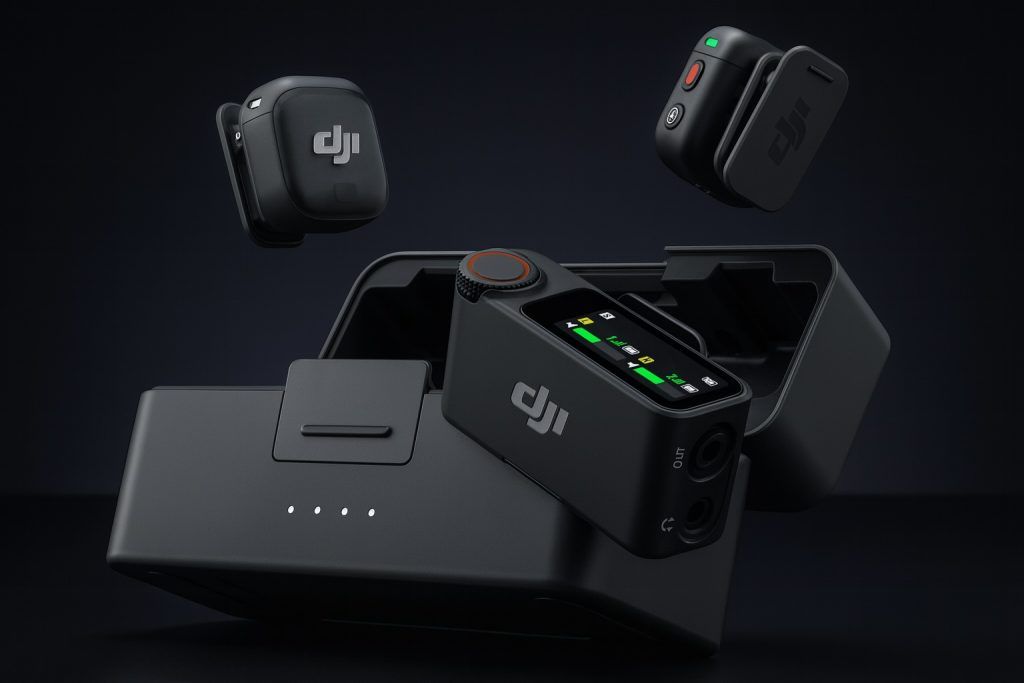Key Facts
- IBM and AMD form a landmark partnership to develop quantum-centric supercomputing architectures, merging IBM’s quantum computers with AMD’s high-performance computing and AI hardware [1] [2]. Top executives Arvind Krishna and Lisa Su say this hybrid approach could “push past the limits of traditional computing” [3] and accelerate innovation across industries [4].
- DARPA awards Q-CTRL two contracts (A$38 M ≈ US$24.4 M) under its Robust Quantum Sensors program to build next-gen quantum navigation sensors resistant to jamming and GPS loss [5]. Lockheed Martin will collaborate, after Q-CTRL’s field tests showed 111× accuracy improvements in GPS-denied navigation [6]. CEO Michael J. Biercuk said DARPA’s support will deliver “a new generation of software-ruggedized quantum sensors for the most challenging defense missions” [7].
- Quantum leaps in life sciences: The Wellcome Sanger Institute (genomics) partnered with Quantinuum in a bid to apply quantum computing to genomics. The Oxford-led consortium aims to execute the world’s first quantum-powered genome analysis by encoding an entire virus genome (PhiX174) on a quantum computer [8] [9]. Quantinuum’s CEO Rajeeb Hazra said they’re honored to help “push the limits of genomics research with quantum algorithms” to open new frontiers in health [10].
- NASA taps Planette to develop “QubitCast,” a quantum-inspired AI weather forecasting system, via a new contract announced Aug. 28. Using physics-based AI models and quantum-inspired algorithms, QubitCast aims to predict extreme weather up to a year in advance (far beyond today’s ~10-day limit) [11]. The approach explores many scenarios in parallel and spots hidden patterns while using a fraction of the computing power [12]. “Instead of slowly scanning year by year…our approach allows us to spot anomalies…much faster and more accurately…while using far less energy,” said Planette CTO Dr. Kalai Ramea [13].
- IonQ showcases scientific leadership at IEEE’s Quantum Computing and Engineering conference (QCE25). On Aug. 28, IonQ announced it will present 4 peer-reviewed research papers – from a hybrid quantum algorithm for power grids to quantum machine learning and fluid dynamics simulations – at the late-August conference [14] [15]. IonQ researchers are also involved in 12 panels/workshops on quantum applications in finance, chemistry, AI, and networking [16], underscoring IonQ’s growing patent portfolio and commitment to real-world quantum solutions [17].
- SuperQ joins Canada’s $223 M quantum-tech network: Calgary-based startup SuperQ Quantum Computing Inc. announced Aug. 27 its acceptance into FABrIC, a national program to bolster Canada’s semiconductor and quantum ecosystem [18]. Membership gives SuperQ access to funding, prototyping facilities, and partnerships across academia and industry [19] – support that will accelerate its hybrid quantum-classical platform. “Joining FABrIC is a major strategic milestone…It plugs our platform and partnerships into the country’s plan to build semiconductor and quantum capacity,” said SuperQ CEO Dr. Muhammad Khan [20].
- Post-quantum cryptography push: Bethesda-based Quantum Xchange used a Aug. 27 briefing to urge government agencies and businesses to migrate to quantum-safe encryption. Citing a study that two-thirds of companies see quantum attacks as a top threat – yet 30% of organizations are “ignoring the quantum threat” – Quantum Xchange announced fall events to educate on adopting NIST-approved post-quantum algorithms [21]. “We’ve upped our event presence…to urge [organizations] not to postpone the inevitable – migrating legacy systems to post-quantum cryptography. There’s just too much at stake,” said Antonio Sanchez, the firm’s Chief Strategy Officer [22].
IBM & AMD Unite for Quantum‑Centric Supercomputing
IBM and AMD have entered a groundbreaking collaboration to merge quantum computing with classical high-performance computing (HPC) and AI systems. Announced on Aug. 26 and reverberating through the tech world by Aug. 27, the partnership establishes a roadmap for “quantum-centric” supercomputing architectures. IBM’s state-of-the-art quantum processors and software will be tightly integrated with AMD’s portfolio of HPC CPUs, GPUs, and adaptive FPGAs [23] [24]. The goal is to create hybrid systems where quantum co-processors tackle problems like molecular simulation, while classical AI supercomputers handle massive data analytics – working in tandem for solutions beyond the reach of either alone [25].
Top leaders from both companies emphasized the high stakes and opportunities. “Quantum computing will simulate the natural world and represent information in an entirely new way,” said IBM Chairman and CEO Arvind Krishna, underscoring that by uniting IBM quantum tech with AMD’s advanced compute, “we will build a powerful hybrid model that pushes past the limits of traditional computing” [26]. AMD’s CEO Dr. Lisa Su agreed, noting “High-performance computing is the foundation for solving the world’s most important challenges… As we partner with IBM to explore the convergence of HPC and quantum, we see tremendous opportunities to accelerate discovery and innovation.” [27]
The partnership is structured as a memorandum of understanding, focusing on technical cooperation rather than immediate commercial product sales [28]. Joint research teams will develop hybrid algorithms that leverage both quantum and classical strengths, with an eye toward problems like materials science, drug discovery, optimization and more [29]. Notably, IBM and AMD plan an initial demonstration by year’s end showing an IBM quantum processor working in concert with AMD hardware on a hybrid workflow [30]. They’ll also explore open-source software integration (e.g. IBM’s Qiskit) to encourage broader adoption of quantum-accelerated computing [31].
This alliance comes as quantum hardware scales toward fault-tolerance by decade’s end, and underscores that future quantum computers will not stand alone – they’ll be closely coupled to classical supercomputers. Industry observers note this move also reunites IBM and AMD, who collaborated in the past on HPC systems, now addressing the quantum era’s needs [32]. By combining IBM’s best-in-class quantum systems (like the 127-qubit and upcoming 1000+ qubit machines) with AMD’s prowess in exascale-class processors (which already power the world’s two fastest supercomputers [33]), the two companies aim to blaze a trail toward practical quantum advantage in computing.
DARPA’s $24 M Bet on Q-CTRL’s Quantum Sensors
The U.S. Defense Advanced Research Projects Agency (DARPA) is investing heavily in quantum sensing – awarding Q-CTRL two contracts totaling A$38 million (about US$24.4 million) on Aug. 27 [34]. Sydney-based Q-CTRL, known for its quantum control software, will use the funding under DARPA’s Robust Quantum Sensors (RoQS) program to develop next-generation quantum navigation sensors for military platforms [35]. These sensors are designed to provide precise navigation in environments where GPS is unavailable or compromised, by exploiting quantum effects to measure motion and rotation ultra-accurately.
Q-CTRL’s solution will build on its AI-stabilized “Ironstone Opal” quantum inertial sensor, which in field tests has demonstrated up to 111-fold greater accuracy than today’s best conventional inertial systems when GPS signals were denied [36]. By leveraging quantum phenomena, the new sensors aim to resist jamming, spoofing, and harsh conditions (vibrations, g-forces) that can foil standard navigation tools [37] [38]. The ultimate goal is to enable highly reliable navigation for crewed and uncrewed defense vehicles even in GPS-denied battlefields or deep GPS blackout zones.
Lockheed Martin will act as a key subcontractor on one of the DARPA projects, bringing its aerospace and GPS expertise to help integrate Q-CTRL’s quantum tech into real defense systems [39] [40]. Other U.S. agencies like NASA and the U.S. Geological Survey are also exploring similar mobile quantum sensors for geophysics and navigation, underscoring the broad potential [41]. DARPA’s RoQS program itself is aimed at fast-tracking quantum sensor development for field use, emphasizing stability against environmental noise and motion [42].
Q-CTRL’s founder and CEO, Michael J. Biercuk, celebrated the news, highlighting DARPA’s legacy in game-changing innovation. “DARPA has an incredible track record of delivering innovations that change the face of society… We’re honored that our recent demonstrations and exciting new ideas earned Q-CTRL’s selection to deliver a new generation of software-ruggedized quantum sensors for the most challenging defense missions. We’re here to win,” Biercuk said in a statement [43]. Thomas Loftus, Senior Fellow at Lockheed Martin, added that this award “signifies the priority defense agencies are placing on quantum navigation… to deliver transformational national security capabilities that complement GPS.” [44]
By pushing quantum sensing from lab prototypes to deployable tech, this project could yield navigation systems that operate with unprecedented precision and resilience. Beyond defense, advances in quantum inertial sensing could impact civil aviation, autonomous vehicles, and even geoscience (for mapping gravitational fields) [45]. DARPA’s bet on Q-CTRL thus not only accelerates military tech but may spur broader innovation in how we measure movement in a quantum-enhanced future.
Genomics Meets Quantum: Sanger Institute & Quantinuum Team Up
A landmark quantum computing initiative in genomics was unveiled on Aug. 28: the Wellcome Sanger Institute – a leading genome research center – has selected Quantinuum (the quantum computing company formed by Honeywell and Cambridge Quantum) as its technology partner for an ambitious project in the Wellcome Leap “Quantum for Bio” (Q4Bio) challenge [46]. This effort, led by the University of Oxford with collaborators in Cambridge, Melbourne, and elsewhere, aims to push genomic data processing beyond the limits of classical computing by harnessing quantum algorithms [47].
The consortium’s near-term mission is bold: to encode and process an entire genome on a quantum computer [48]. They plan to start with the genome of bacteriophage PhiX174 – a virus whose DNA was the first ever sequenced (earning Fred Sanger a Nobel Prize) [49]. Successfully running a complete genomic dataset through a quantum processor would mark a world-first demonstration of practical quantum computing in biology [50] [51]. It’s seen as a proof-of-concept that quantum computers could handle complex, variable genomes that even today’s most powerful classical supercomputers struggle with [52] [53].
Quantinuum brings to the table its H2 quantum system, currently one of the world’s highest-performing quantum computers (holding a Quantum Volume record of 8,388,608) [54]. By partnering with Sanger, Quantinuum will provide hardware, software, and algorithm expertise – a full-stack approach – to tackle genomic tasks like assembling sequences and analyzing genetic variability in ways not feasible classically [55]. For example, quantum algorithms might help construct “graph-based pangenomes” that represent genetic diversity more efficiently than linear DNA references [56] [57].
Stakeholders are optimistic about the implications. “We were honored to be selected by the Sanger Institute to partner in tackling some of the most complex challenges in genomics. By bringing the world’s highest performing quantum computers to this collaboration, we will help the team push the limits of genomics research with quantum algorithms and open new possibilities for health and medical science,” said Rajeeb Hazra, President and CEO of Quantinuum [58]. Quantinuum’s Founder and CPO Ilyas Khan added that “Quantum computational biology has long inspired us… it has the potential to transform global health”, enabling longer and healthier lives through new insights [59].
If successful, this project could herald a new era of “quantum-powered bioinformatics.” It addresses challenges such as mapping highly complex genomes, detecting subtle genetic variations, and modeling biological processes – tasks that can overwhelm classical HPC due to combinatorial complexity. The Q4Bio initiative, backed by the Wellcome Leap program, explicitly seeks quantum approaches to smash through those bottlenecks [60]. In the long run, quantum computing might become a standard tool in genomic research and precision medicine, just as the original Human Genome Project spurred advances using classical supercomputers [61]. The Sanger-Quantinuum partnership is an early step toward that vision, aiming to demonstrate within a year that quantum computers can solve real biological problems that were once considered intractable.
NASA Backs Quantum‑Inspired Weather Forecasting
As climate extremes intensify, NASA is turning to quantum-inspired AI to improve long-range weather forecasts. On Aug. 28, Planette (a Silicon Valley climate tech startup) announced it was selected by NASA to develop “QubitCast,” an AI-driven system for predicting extreme weather events weeks to months in advance [62]. This project, funded under a NASA Small Business Innovation Research (SBIR) grant, represents a novel fusion of quantum computing concepts with artificial intelligence to overcome current forecasting limits.
Today’s best weather models can only forecast about 7–10 days out with high fidelity. QubitCast aims to extend that horizon to seasons – up to a year ahead – focusing on early warnings for events like heatwaves, floods, and hurricanes [63]. Planette’s approach layers multiple physics-based climate models with machine learning, and crucially, employs quantum-inspired algorithms that treat the data more like a quantum system: exploring many possible weather trajectories in parallel rather than one deterministic simulation [64]. In practice, this means sifting through terabytes of atmospheric and ocean data to find subtle signals (the “needles in the haystack”) that often precede extreme events, something classical AI struggles with due to sheer complexity [65] [66].
One advantage touted is efficiency. By borrowing ideas from quantum computing – such as superposition-inspired parallel scenario analysis – QubitCast can reportedly achieve better accuracy with far less computational power and energy than brute-force climate simulations [67] [68]. This could make year-long forecasts not only possible but practical. “Planette is one of the first companies to take these methods beyond theory and apply them to weather and climate… Instead of slowly scanning year by year and missing critical details, our approach allows us to spot anomalies – those needles in the haystack that signal extreme weather events – much faster and more accurately…while using far less energy,” explained Dr. Kalai Ramea, Planette’s co-founder and CTO [69]. In essence, QubitCast “reads” the Earth’s entire climate history at once (in a quantum-like way) to detect patterns that conventional models or AI might miss when plodding stepwise.
The promise of such technology is significant: earlier and more reliable forecasts for disasters could inform agriculture, infrastructure, and emergency planning. “Too many critical decisions are made in the dark because reliable long-range forecasts simply haven’t been available,” noted Dr. Hansi Singh, Planette’s CEO. “QubitCast changes that equation by making subseasonal-to-seasonal forecasting not just more accurate but practical to deploy at scale… Whether it’s farmers planning crop cycles, emergency managers preparing for hurricane season, or energy companies managing grid stability, this technology provides the lead time needed to act proactively rather than reactively.” [70] Early-warning of a drought months ahead, or a heightened hurricane season, for instance, could save billions of dollars and countless lives through better preparation.
NASA’s contract with Planette comes on the heels of the startup’s progress in this arena – earlier this year it won an NSF grant for related AI model development and even launched a public long-range forecasting tool [71]. The collaboration reflects growing government interest in quantum-inspired algorithms as a bridge to full quantum computing applications. While QubitCast doesn’t require actual quantum hardware (it runs on classical machines), it demonstrates how quantum ideas can already enhance AI for pressing problems. If successful, it may pave the way for future hybrid systems, especially as quantum computers mature to handle climate modeling directly. In the meantime, Planette’s work could significantly boost our predictive power against the planet’s most extreme and consequential weather events.
IonQ’s Research Bonanza at IEEE Quantum Conference
IonQ – a prominent quantum computing company – grabbed headlines on Aug. 28 with a flurry of academic contributions slated for the upcoming IEEE International Conference on Quantum Computing and Engineering (known as IEEE Quantum Week or QCE25). The College Park, MD-based firm announced it has four peer-reviewed papers accepted at the conference (Aug. 31 – Sept. 5 in Albuquerque) and will participate in twelve workshops and panels, underlining IonQ’s growing R&D presence [72] [73].
The research papers span a mix of algorithms and applications, showcasing how IonQ’s hardware and team are tackling real-world problems:
- A hybrid quantum-classical algorithm for the “unit commitment” problem in electrical grid management – basically, optimizing which power plants to run to meet energy demand [74]. This is a core optimization challenge for renewable energy integration, and IonQ’s paper proposes a new approach that could improve efficiency.
- A method for accelerating large-scale linear algebra calculations using a variational quantum imaginary time evolution technique [75]. Linear algebra underpins countless scientific and engineering tasks, so speed-ups here have broad implications.
- Advances toward a Quantum Lattice Boltzmann Method, developed with simulation software company Ansys, demonstrating the most complex fluid dynamics simulation on quantum hardware to date [76]. This hints that quantum computers might one day tackle computational fluid dynamics for aerospace or climate modeling.
- A study on quantum algorithms for fine-tuning language models (akin to today’s AI like GPT, but using quantum-classical hybrid methods) for tasks in image processing, chemistry, and materials science [77]. This bridges quantum computing with the hot field of AI, exploring whether quantum circuits can enhance machine learning for certain data types.
All four papers were peer-reviewed and will be presented during the conference sessions [78]. IonQ highlighted that IEEE, as a top professional society, recognized the company’s work spanning quantum machine learning, optimization, fluid dynamics, and AI, reflecting the company’s broad ambition in quantum R&D [79].
In addition to technical papers, IonQ’s scientists and engineers are contributing to a dozen panels and workshops at QCE25 [80]. Topics include quantum applications in finance, chemistry, life sciences, artificial intelligence, as well as discussions on quantum computer architectures, networking, and error mitigation [81]. Essentially, IonQ will be omnipresent at the event – a sign of its growing role in the research community.
This flurry of academic output also serves a strategic purpose. It bolsters IonQ’s credibility as not just a hardware vendor but a leader in quantum science. The company points to its more than 1,000 patents and a pipeline of innovations feeding into its goal of delivering quantum systems with 2 million qubits by 2030 [82] [83]. IonQ’s current trapped-ion quantum computers (like IonQ Forte) are already used via cloud providers and partnerships with the likes of Amazon, NVIDIA, and pharmaceutical companies [84]. By sharing research openly, IonQ is validating the “quality of the company’s research” and commitment to advancing quantum computing toward practical advantage [85] [86].
No explicit quotes were provided in the press release, but the message is clear: IonQ is doubling down on scientific contributions. Its presence at IEEE QCE25 signals that even as the company pursues commercial milestones, it remains deeply engaged with the academic and technical challenges of the field. For observers, this suggests IonQ’s technology is maturing – tackling diverse problems and collaborating with external researchers – which is vital on the road to making quantum computing truly useful. The news also indicates a healthy interplay between industry and academia in quantum science, as companies like IonQ contribute to conferences with peer-reviewed work, accelerating overall progress in the field.
SuperQ Joins Canada’s National Quantum Initiative
In Canada, startup SuperQ Quantum Computing Inc. celebrated a strategic win on Aug. 27: it has been accepted into FABrIC, a major government-backed innovation network for semiconductors and quantum technology [87]. FABrIC (Flexible Access to Binary and Quantum Innovation Capital) is a five-year, CA$223 million (~US$165M) program led by CMC Microsystems and funded by Canada’s Strategic Innovation Fund [88]. Its mission is to strengthen domestic capabilities in photonics, microchips (MEMS, compound semiconductors), and quantum tech by pooling funding, infrastructure, and industry partnerships across the country [89].
For SuperQ – a Calgary-based company developing a hybrid quantum-classical computing platform – this membership is a significant boost. It grants direct access to FABrIC’s resources, including challenge-based funding opportunities, advanced prototyping and fabrication services, and connections to a network of Canada’s top semiconductor and quantum researchers [90] [91]. In practical terms, SuperQ can leverage national facilities (like shared microfabrication labs) to build and test its hardware, tap into talent training programs, and collaborate on projects alongside universities and industry leaders. Such support can greatly accelerate a startup’s R&D and commercialization timeline.
SuperQ’s inclusion comes as FABrIC is gearing up for its second round of project grants. (In the first round, the program attracted 138 proposals and funded 20 projects, several of which were quantum-focused [92].) Dr. Muhammad Khan, CEO and Board Chair of SuperQ, called the membership “a major strategic milestone for SuperQ.” “It plugs our [Super™] platform and Canadian R&D partnerships into the country’s coordinated plan to build semiconductor and quantum capacity,” Khan said [93]. By being part of this national initiative, SuperQ gains a de-risked path to scale up – from developing quantum hardware prototypes to finding early adopters in government or industry through FABrIC’s network.
The move also signals Canada’s ongoing commitment to foster a domestic quantum industry. With global competition in quantum heating up, Canada is ensuring that homegrown companies like SuperQ have the support to innovate locally and potentially keep intellectual property and high-tech jobs within the country. SuperQ, which positions itself as a “global leader in quantum and supercomputing” (it’s listed on stock exchanges in Canada, Frankfurt, and OTC in the U.S. [94]), will now be able to deepen its roots in the Canadian innovation ecosystem.
As next steps, SuperQ announced it will “immediately begin engaging with FABrIC working groups” and target upcoming challenge calls where its Super™ hybrid quantum-classical platform can be applied [95]. The platform presumably aims to integrate quantum processors with classical high-performance computing for enhanced performance. With FABrIC’s backing, SuperQ hopes to advance commercialization of its technology and expand R&D partnerships nationwide [96] [97]. In sum, this partnership between a nimble startup and a national program exemplifies how public investment can catalyze progress in quantum computing, ensuring startups have the necessary tools and connections to bring cutting-edge tech from lab to market.
Urgent Call to Embrace Post‑Quantum Cryptography
While many of the week’s quantum news focused on breakthroughs and investments, experts are also sounding the alarm on quantum security threats and the need for action now. On Aug. 27, Quantum Xchange, a U.S. firm specializing in quantum-safe encryption, issued a public call urging government agencies and businesses to accelerate their migration to post-quantum cryptography (PQC) [98] [99]. This comes amid growing awareness that quantum computers could one day crack traditional encryption – an event often dubbed “Q-Day.”
Quantum Xchange’s push is backed by sobering data. A recent Capgemini Research Institute study found two-thirds of organizations see quantum computing as the most critical cybersecurity threat of the next 3–5 years, and 65% are concerned about “harvest now, decrypt later” attacks (adversaries stockpiling encrypted data now to decrypt once quantum machines are available) [100]. Yet 30% of surveyed organizations have taken no action toward quantum-proofing their systems [101]. Budget constraints and talent shortages were cited as factors, but the complacency is what Quantum Xchange seeks to address.
In a series of announcements, the company outlined plans for educational reports, webinars, and event appearances throughout fall 2025 to help organizations get PQC-ready [102] [103]. For example, Quantum Xchange will host a panel on “Transitioning to Quantum-Resistant Computing” at the Billington Cybersecurity Summit in Washington D.C. on Sept. 9 [104] [105]. They’re also partnering with tech publisher Scoop News Group on a report advising federal agencies to adopt “cryptographic agility” – essentially, upgradeable encryption systems that can swap in new quantum-safe algorithms readily [106]. Internationally, the company will participate in a NATO innovation event in Portugal to underscore the military importance of quantum-safe communications [107]. Additionally, Quantum Xchange is teaming with the SANS Institute on a forthcoming report and webinar about practical steps toward PQC deployment [108].
Antonio Sanchez, Quantum Xchange’s Chief Evangelist and Strategy Officer, delivered a clear message: waiting is not an option. “As a quantum-technology innovator and data security visionary, [we are] committed to helping lead the industry through aggressive thought leadership… We’ve upped our event presence this fall to help educate the market and urge commercial businesses and government agencies not to postpone the inevitable – migrating legacy systems to NIST-standard Post Quantum Cryptographic algorithms. There’s just too much at stake,” Sanchez said [109]. In other words, the transition to quantum-resistant encryption needs to happen before large quantum computers arrive, not after.
This sense of urgency is echoed by policymakers. The U.S. has already passed legislation for quantum cryptography migration: a recent defense bill includes a $1.7 billion allocation to modernize cryptographic systems [110]. NIST (National Institute of Standards and Technology) has also standardized several PQC algorithms in 2022-2023, giving organizations a blueprint for what new encryption to implement. But the gap between awareness and action remains wide in both the public and private sector.
Quantum Xchange’s news this week highlights that quantum threats aren’t just a science problem; they’re a policy and readiness problem. By convening experts and offering guidance, the company hopes to jump-start lagging efforts to swap out vulnerable public-key encryption (like RSA and ECC) for quantum-resistant alternatives. This includes practices like crypto-agility (designing systems that can rapidly switch ciphers) and out-of-band key distribution (as offered in Quantum Xchange’s Phio TX product) to mitigate risks [111] [112].
In summary, amid the excitement of quantum computing breakthroughs, the security community is racing the clock to defend today’s data against tomorrow’s quantum capabilities. The end of August 2025 saw a crescendo of calls to action: start upgrading encryption now or risk a catastrophe later. Organizations that heed this warning and begin implementing PQC will be better positioned when quantum computers eventually make current cryptography obsolete – an outcome that grows likelier with each advance in quantum technology.
Sources:
- IBM & AMD quantum-centric supercomputing partnership – IBM News Release (Aug. 26, 2025) [113] [114]; The Next Platform analysis [115].
- DARPA contracts Q-CTRL for quantum sensors – The Quantum Insider (Aug. 27, 2025) [116] [117].
- Sanger Institute & Quantinuum genomics partnership – The Quantum Insider (Aug. 28, 2025) [118] [119].
- NASA selects Planette for QubitCast – The Quantum Insider (Aug. 28, 2025) [120] [121].
- IonQ research at IEEE QCE25 – Business Wire press release (Aug. 28, 2025) [122] [123].
- SuperQ joins FABrIC program – The Quantum Insider (Aug. 27, 2025) [124] [125].
- Quantum Xchange PQC migration push – Quantum Xchange press release (Aug. 27, 2025) [126] [127].
References
1. newsroom.ibm.com, 2. newsroom.ibm.com, 3. newsroom.ibm.com, 4. newsroom.ibm.com, 5. thequantuminsider.com, 6. thequantuminsider.com, 7. thequantuminsider.com, 8. thequantuminsider.com, 9. thequantuminsider.com, 10. thequantuminsider.com, 11. thequantuminsider.com, 12. thequantuminsider.com, 13. thequantuminsider.com, 14. www.businesswire.com, 15. www.businesswire.com, 16. www.businesswire.com, 17. www.businesswire.com, 18. thequantuminsider.com, 19. thequantuminsider.com, 20. thequantuminsider.com, 21. quantumxc.com, 22. quantumxc.com, 23. newsroom.ibm.com, 24. newsroom.ibm.com, 25. newsroom.ibm.com, 26. newsroom.ibm.com, 27. newsroom.ibm.com, 28. www.nextplatform.com, 29. www.nextplatform.com, 30. newsroom.ibm.com, 31. newsroom.ibm.com, 32. www.nextplatform.com, 33. newsroom.ibm.com, 34. thequantuminsider.com, 35. thequantuminsider.com, 36. thequantuminsider.com, 37. thequantuminsider.com, 38. thequantuminsider.com, 39. thequantuminsider.com, 40. thequantuminsider.com, 41. thequantuminsider.com, 42. thequantuminsider.com, 43. thequantuminsider.com, 44. thequantuminsider.com, 45. thequantuminsider.com, 46. thequantuminsider.com, 47. thequantuminsider.com, 48. thequantuminsider.com, 49. thequantuminsider.com, 50. thequantuminsider.com, 51. thequantuminsider.com, 52. thequantuminsider.com, 53. thequantuminsider.com, 54. thequantuminsider.com, 55. thequantuminsider.com, 56. thequantuminsider.com, 57. thequantuminsider.com, 58. thequantuminsider.com, 59. thequantuminsider.com, 60. thequantuminsider.com, 61. thequantuminsider.com, 62. thequantuminsider.com, 63. thequantuminsider.com, 64. thequantuminsider.com, 65. thequantuminsider.com, 66. thequantuminsider.com, 67. thequantuminsider.com, 68. thequantuminsider.com, 69. thequantuminsider.com, 70. thequantuminsider.com, 71. thequantuminsider.com, 72. www.businesswire.com, 73. www.businesswire.com, 74. www.businesswire.com, 75. www.businesswire.com, 76. www.businesswire.com, 77. www.businesswire.com, 78. www.businesswire.com, 79. www.businesswire.com, 80. www.businesswire.com, 81. www.businesswire.com, 82. www.businesswire.com, 83. www.businesswire.com, 84. www.businesswire.com, 85. www.businesswire.com, 86. www.businesswire.com, 87. thequantuminsider.com, 88. thequantuminsider.com, 89. thequantuminsider.com, 90. thequantuminsider.com, 91. thequantuminsider.com, 92. thequantuminsider.com, 93. thequantuminsider.com, 94. thequantuminsider.com, 95. thequantuminsider.com, 96. thequantuminsider.com, 97. thequantuminsider.com, 98. quantumxc.com, 99. quantumxc.com, 100. quantumxc.com, 101. quantumxc.com, 102. quantumxc.com, 103. quantumxc.com, 104. quantumxc.com, 105. quantumxc.com, 106. quantumxc.com, 107. quantumxc.com, 108. quantumxc.com, 109. quantumxc.com, 110. quantumxc.com, 111. quantumxc.com, 112. quantumxc.com, 113. newsroom.ibm.com, 114. newsroom.ibm.com, 115. www.nextplatform.com, 116. thequantuminsider.com, 117. thequantuminsider.com, 118. thequantuminsider.com, 119. thequantuminsider.com, 120. thequantuminsider.com, 121. thequantuminsider.com, 122. www.businesswire.com, 123. www.businesswire.com, 124. thequantuminsider.com, 125. thequantuminsider.com, 126. quantumxc.com, 127. quantumxc.com










